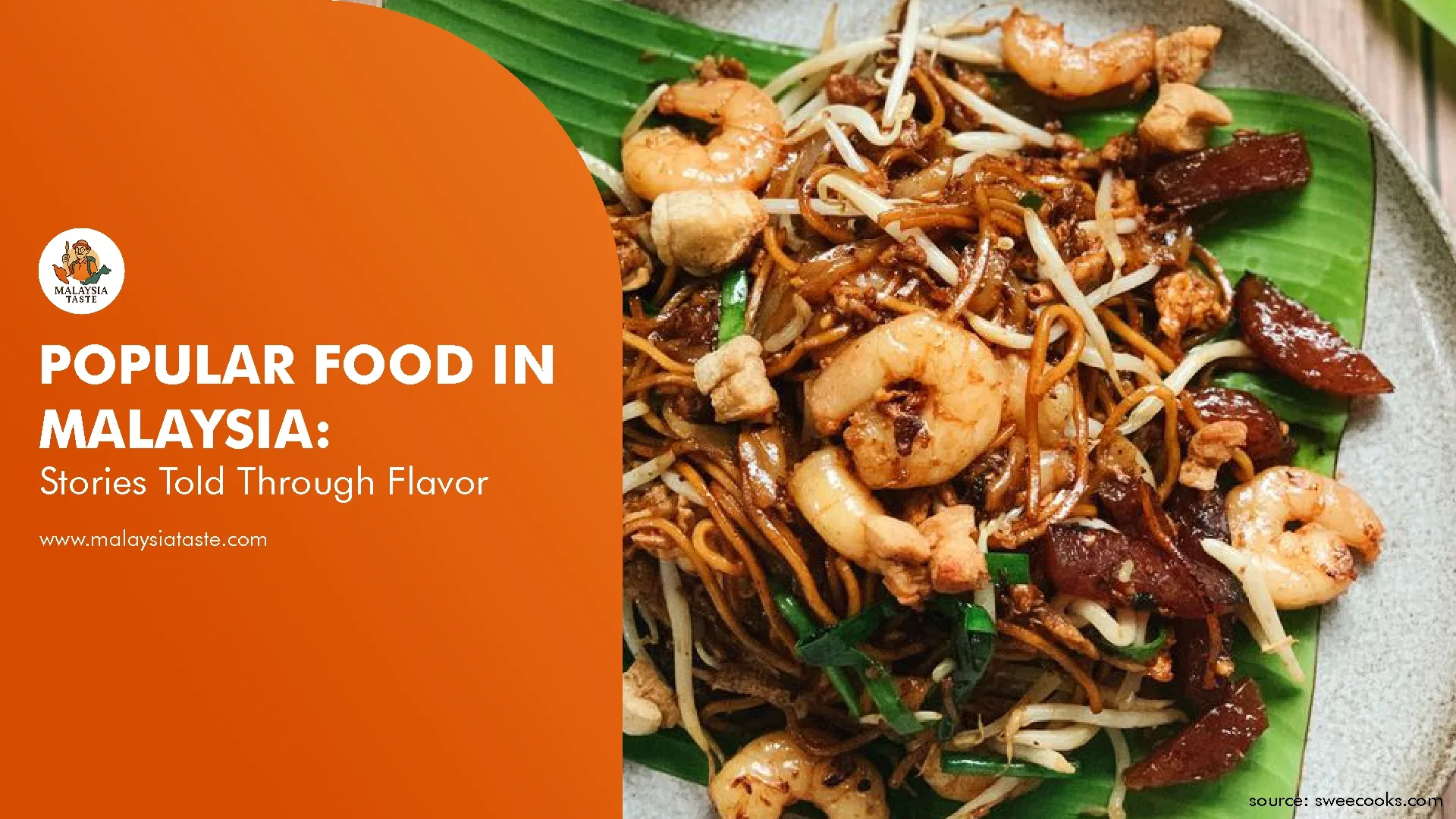Stepping into a Malaysian night market, you’re instantly embraced by a swirl of aromas – smoky satay grilling over charcoal, tangy laksa bubbling in coconut broth, and the sweet chill of coconut jelly desserts. This sensory overload captures the essence of popular food in Malaysia, a cuisine shaped by centuries of cultural exchange between Malay, Chinese, Indian, and Peranakan communities. The result is a bold harmony of sweet, sour, and spicy notes that defines the nation’s most beloved dishes. Take nasi lemak, for example – coconut-rich rice paired with fiery sambal, crunchy anchovies, and roasted peanuts – a dish often celebrated as Malaysia’s national treasure. Every bite of these iconic foods carries a piece of history, turning Malaysia into a true paradise for adventurous eaters.
Peninsular Delicacies: Malay, Chinese and Indian Classics
On Peninsular Malaysia, Malay, Chinese and Indian cuisines each contribute beloved dishes. Malay staples include nasi lemak (coconut rice) and rendang (slow-cooked spicy beef). Chinese-Malaysian favorites include char kway teow (wok-tossed flat rice noodles) and Hokkien mee. Indian-influenced dishes feature roti canai (crispy flatbread) and biryani rice. In fact, Malaysian guides note that the nation’s most famous foods often reflect this cultural mix.
For example, nasi lemak – fragrant rice cooked in coconut milk – is served with spicy chili sambal, crunchy peanuts, fried anchovies and egg, embodying Malaysia’s sweet-and-spicy palette. Likewise, satay (grilled meat skewers dipped in peanut sauce) is a Malay classic beloved nationwide. Many locals consider char kway teow “arguably Malaysia’s most famous noodle”, and Indian-style roti canai is a breakfast fixture. This rich tapestry of Malay curries, Chinese stir-fries and Indian breads means even simple street-food stalls serve a dazzling variety.
Street Food and Hawker Culture
Nothing compares to the street-food scene in Malaysia. Crowded hawker centers and night markets turn every meal into an adventure. Bite into char kway teow – loaded with plump prawns, Chinese sausage and bean sprouts – straight from the flaming wok. Sip teh tarik (pulled milk tea) as vendors flip it theatrically. Beat the heat with cendol, an icy dessert of pandan-flavored jelly and sweet palm sugar. Savory bak kut teh (herbal pork rib soup) and sweet apam balik (fluffy peanut pancakes) are also hawker favorites. These bustling stalls serve the real deal – generations-old recipes enjoyed by Malaysians every day – and show why local guides call street food a “living tradition”.
Island and Borneo Specialties
Venture beyond Kuala Lumpur and Peninsular Malay, and Malaysia’s regional tastes shine even more. On the island of Penang, for example, Assam laksa – a sour fish noodle soup – and Penang-style char kway teow define northern hawker cuisine. In the historic city of Malacca, rich Peranakan (Nyonya) dishes blend Malay and Chinese flavors in specialties like ayam buah keluak (spiced chicken stew).
Across the sea in Borneo, the states of Sabah and Sarawak offer best local dishes. Sabah’s hinava is a kinilaw-style salad of raw fish marinated in lime and chilies, reflecting its indigenous heritage. Sarawak’s cuisine features its own laksa variant: Sarawak laksa – a hearty coconut-based noodle soup – and sweet, rainbow-layered kek lapis cake. As one source notes, dishes like Sabah Hinava and Sarawak Laksa “vividly capture the distinctive regional and cultural influences” of Malaysia. Even on the edges of the map, Malaysia’s top foods continue to tell the story of the land and its people.
Planning Your Food Journey
For travelers from the UK, US, Australia (or any corner of the globe), planning how to eat like a local is part of the fun. A good rule is to follow the crowds: busy warungs and street stalls usually mean delicious, authentic food. Don’t be afraid of heat – many vendors will dial down the chili if asked. Most dishes combine sweet, sour and spicy notes, so even new palates can find something to love.
Eat Like a Local
Embrace communal eating (don’t shy away from eating with your hands) and try everything at least once. Ask questions – Malaysian cooks love to share their food culture. If you’re in Kuala Lumpur, budget some time for the vibrant food markets at Jalan Alor or Petaling Street. Overwhelmed by choices? Here are some quick tips: order the nasi lemak for a true national flavor; try char kway teow or Hokkien mee from a street vendor; and end with a sweet cendol or ice kacang to cool down.
Guided Food Tours in Kuala Lumpur
If you want an expert introduction, consider a guided food tour in KL. For example, Malaysia Taste offers tours with “15+ tastings across 9-10 stops”, covering everything from savory bites to desserts. Tours are led by born-and-raised Malaysian guides who share the stories and culture behind each dish. In just a few hours, you’ll sample classic dishes and hidden gems without sifting menus yourself. It’s a hassle-free way to pack Malaysia’s best eats into one day.
Every bite in Malaysia tells a story – from Penang’s sea-level streets to Borneo’s jungles. Use these tips as your travel checklist. Whether strolling city markets or joining a food tour, Malaysia’s popular foods are ready to surprise and delight you. For more information or to book a Kuala Lumpur food tour, visit Malaysia Taste’s website – your passport to an authentic Malaysian culinary adventure.
Book your food tour today and experience Kuala Lumpur’s best street food!
Malaysia Taste is proudly operated by ZFB Travel Sdn Bhd (1565697-H) and fully licensed under MOTAC (KPL/LN 12070).
